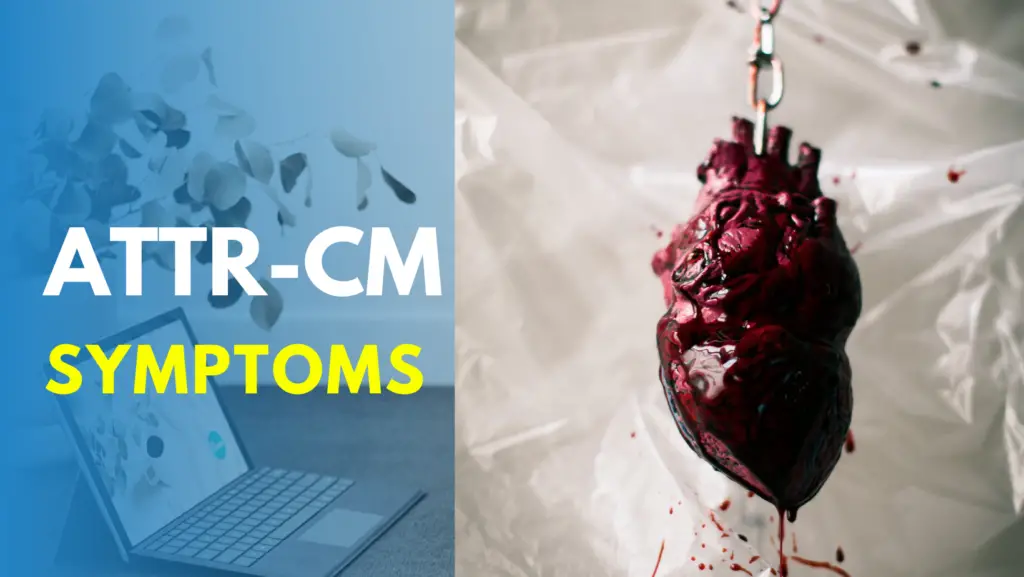Transthyretin amyloid cardiomyopathy (ATTR-CM) is a rare but serious condition that affects the heart, leading to impaired cardiac function. The Mayo Clinic, a world-renowned medical institution, plays a crucial role in researching, diagnosing, and treating ATTR-CM. In this article, we will explore the symptoms associated with ATTR-CM, as recognized by Mayo Clinic experts.
Overview of ATTR-CM:
ATTR-CM is a type of cardiomyopathy characterized by the buildup of abnormal deposits of protein called amyloid in the heart tissue. These deposits hinder the heart’s ability to pump blood effectively, leading to heart failure over time. There are two forms of ATTR-CM: hereditary (caused by genetic mutations) and wild type (non-hereditary).
Symptoms of ATTR-CM:
Mayo Clinic has identified several key symptoms associated with ATTR-CM. It’s important to note that symptoms may vary from person to person, and the severity of symptoms can also differ. Common manifestations of ATTR-CM include:
a. Heart-related Symptoms: – Shortness of breath: As the heart’s pumping ability diminishes, individuals may experience difficulty breathing, especially during physical activity. – Fatigue: Reduced cardiac function can lead to persistent tiredness and lack of energy. – Irregular heartbeats: Heart rhythm abnormalities may occur, causing palpitations or a fluttering sensation in the chest.
b. Swelling: – Swelling in the legs and ankles (edema) may occur due to the heart’s inability to efficiently circulate blood throughout the body.
c. Weight Loss: – Unexplained weight loss can be a symptom of ATTR-CM, often due to the body’s increased energy expenditure as the heart works harder.
d. Gastrointestinal Issues: – Some individuals with ATTR-CM may experience symptoms related to the gastrointestinal system, such as nausea and loss of appetite.
e. Orthostatic Hypotension: – A drop in blood pressure upon standing, leading to dizziness or fainting, may be observed in some cases.
- Diagnosis and Mayo Clinic Expertise:
Mayo Clinic employs state-of-the-art diagnostic techniques to identify and differentiate ATTR-CM from other heart conditions. Diagnostic methods may include echocardiography, cardiac MRI, and nuclear imaging. Genetic testing may also be conducted to determine whether the condition is hereditary.
- Treatment Options:
Once diagnosed, Mayo Clinic specialists tailor treatment plans to address the specific needs of individuals with ATTR-CM. While there is currently no cure for the condition, various therapeutic approaches aim to manage symptoms, slow disease progression, and improve quality of life. Treatment may include medications, lifestyle modifications, and in some cases, heart transplantation.
Conclusion:
ATTR-CM poses significant challenges, but advances in research and the expertise of institutions like Mayo Clinic offer hope for improved diagnosis and management. Recognizing the symptoms of ATTR-CM is crucial for early intervention and improved outcomes. Individuals experiencing symptoms associated with ATTR-CM should seek medical attention promptly, and consultation with healthcare professionals, especially those with expertise in cardiac conditions, is essential for accurate diagnosis and appropriate management. Mayo Clinic’s commitment to research, education, and patient care continues to contribute to advancements in understanding and addressing ATTR-CM.
Our Latest Posts
- 10 Reasons For Avoid Starbucks Medicine Ball
 Don’t Buy Starbucks Medicine Ball Starbucks Medicine Ball, a popular drink on the Starbucks menu, has gained attention for its supposed health benefits. However, before you make a purchase, it’s …
Don’t Buy Starbucks Medicine Ball Starbucks Medicine Ball, a popular drink on the Starbucks menu, has gained attention for its supposed health benefits. However, before you make a purchase, it’s … - 10 Delicious Mediterranean Diet Breakfast Ideas with Pictures
 10 Delicious Mediterranean Diet Breakfast Ideas 1. What is the Mediterranean Diet? The Mediterranean diet is not just a diet but a way of life inspired by the traditional eating …
10 Delicious Mediterranean Diet Breakfast Ideas 1. What is the Mediterranean Diet? The Mediterranean diet is not just a diet but a way of life inspired by the traditional eating …10 Delicious Mediterranean Diet Breakfast Ideas with Pictures Read More »
- RYZE mushroom coffee reviews 2024
 There are so many Questions people are finding right now. Like Today we will know about all of this and find out if RYZE coffee good for us. RYZE mushroom …
There are so many Questions people are finding right now. Like Today we will know about all of this and find out if RYZE coffee good for us. RYZE mushroom … - How Naked Yoga Can Help Us: Embracing Freedom and Liberation
 In recent years, the practice of yoga has taken various forms, from traditional Hatha to more modern variations like hot yoga or aerial yoga. However, one particular variant has been …
In recent years, the practice of yoga has taken various forms, from traditional Hatha to more modern variations like hot yoga or aerial yoga. However, one particular variant has been …How Naked Yoga Can Help Us: Embracing Freedom and Liberation Read More »
- Best Part-Time Day Care in California 2024
 Best Part-Time Day Care in California 2024 Day care, also known as childcare, is a facility where parents can leave their children in the care of day care professional while …
Best Part-Time Day Care in California 2024 Day care, also known as childcare, is a facility where parents can leave their children in the care of day care professional while …






